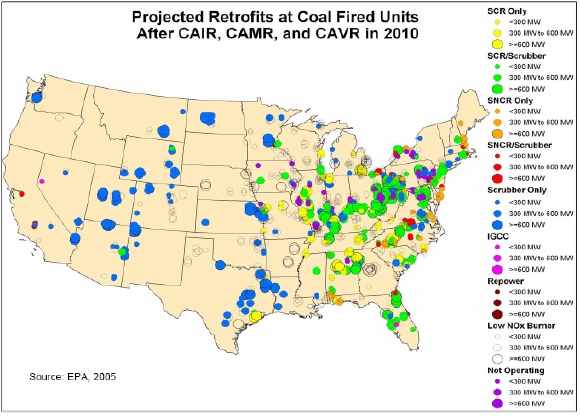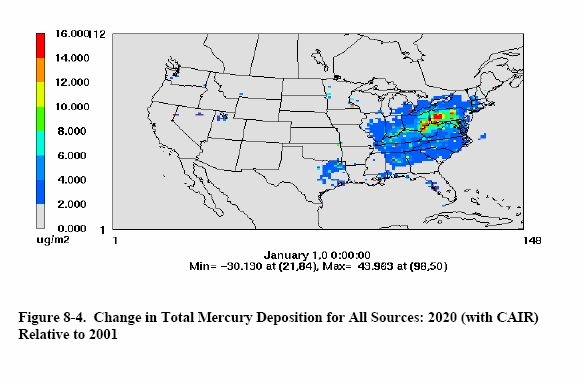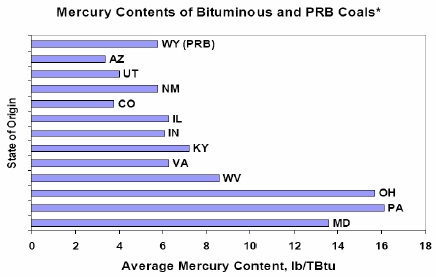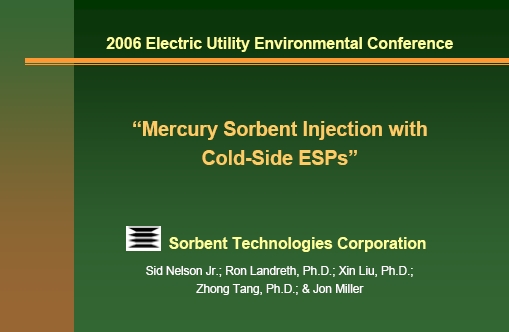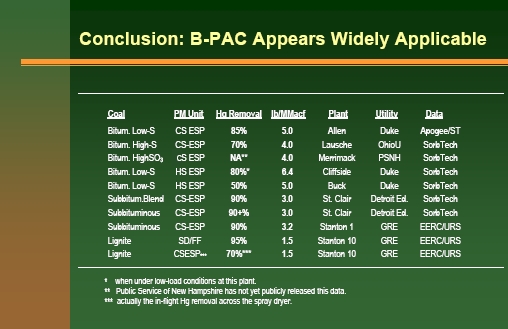Eugene M. Trisko
Attorney at Law*
P.O. Box 596
Berkeley Springs, WV 25411
(304) 258-1977
(301) 639-5238 (cell)
emtrisko@earthlink.net
*Admitted in DC
Illinois Pollution Control Board
August 25, 2006
100 West Randolph Street
Suite 11-500
Chicago, Illinois 60601
Re: Comments on Proposed Mercury Emission Controls for Electric
Generating Units in Illinois – R06-25
Honorable members:
These comments are submitted on behalf of Unions for Jobs and the
Environment (UJAE), a §501(c)(4) organization of eleven national and
international labor unions.
1
UJAE’s member unions represent a spectrum of more than 3.2 million
workers in electric power, transportation, coal mining, construction and
other industries. UJAE members’ jobs and economic wellbeing will be
directly impacted by the Pollution Control Board’s decisions on Illinois
EPA’s (“IEPA”) proposed standards for mercury emissions from power
plants.
Representatives of UJAE member unions participated actively in the
preliminary development of these proposed regulations, including meetings
with Director Doug Scott and with representatives of Governor
1
Member unions of UJAE are: Brotherhood of Locomotive Engineers; International
Brotherhood of Boilermakers, Iron Ship Builders, Blacksmiths, Forgers and Helpers;
International Brotherhood of Electrical Workers; International Brotherhood of Teamsters;
Marine Engineers Beneficial Association; Sheet Metal Workers International Association;
United Association of Journeymen and Apprentices in the Plumbing and Pipefitting
Industry; United Food and Commercial Workers International Union; United Mine
Workers of America; United Transportation Union; and Utility Workers of America. For
further information about UJAE,
see
, www.ujae.org.
ELECTRONIC FILING, RECEIVED, CLERK'S OFFICE, AUGUST 25, 2006
* * * * * PC 6286 * * * * *
2
Blagojevich’s Administration. We expressed serious concerns about the
effects of a state-specific mercury rule on workers at generating plants
unable to meet stringent emission limits within unrealistic deadlines; the
chilling effect that the proposed rule would have on the future development
of Illinois coal; and the absence of measurable environmental benefits
compared to implementation of U.S. EPA’s Clean Air Mercury Rule
(CAMR).
The interests of UJAE member unions in the mercury control issue are
straightforward. If IEPA’s proposed rule leads to the closure of many of the
state’s relatively old and small generating plants - as we expect it will -
electrical workers, coal miners and workers in energy-related industries will
lose their jobs. UJAE members view EPA’s Clean Air Mercury Rule, and
its national emission trading program, as the best means to “level the playing
field” for these smaller and older powerplants, and to help revive markets for
Illinois coal.
CAMR is the companion to EPA’s Clean Air Interstate Rule (CAIR)
for reducing emissions of sulfur dioxide and nitrogen oxides through a
market-based emissions trading program. CAMR is designed to work in
tandem with CAIR, by achieving mercury reductions at little or no cost as
“co-benefits” of emission control technologies for the reduction of SO2 and
NOx emissions. Imposing a state-specific, command-and-control mercury
rule with no opportunities for emissions trading or banking would increase
the risks of plant closures and job losses, raise electric costs for consumers
and industries, and reduce the potential for revitalization of the Illinois coal
industry.
Background
The United States is the only country in the world with a
comprehensive regulatory program for reducing mercury emissions from
industrial sources. Most major sources of mercury emissions, such as
municipal and hospital waste incinerators, already are subject to EPA
mercury emission limitations. Mercury deposition in the U.S. from foreign
sources, such as China, is expected to increase.
2
Mercury is a pollutant that circulates throughout the global
atmospheric environment. Emissions by U.S. electric utilities represent
approximately one percent of global mercury emissions from natural and
2
Id
., at 391.
ELECTRONIC FILING, RECEIVED, CLERK'S OFFICE, AUGUST 25, 2006
* * * * * PC 6286 * * * * *
3
manmade sources. U.S. EPA estimates that domestic electric utilities
contribute 11 tons of the 144 tons of mercury deposited annually in the
continental United States. When EPA’s Clean Air Mercury Rule is fully
implemented, U.S. EPA projects that domestic utility deposition will decline
to 3 tons annually.
3
Mercury is a public health issue because it can be consumed by
women of childbearing age who eat contaminated fish. Adverse health
effects, in the form of developmental disorders, can occur among children of
women exposed to high levels of mercury as a consequence of fish
consumption.
More than 80% of dietary mercury consumption in the U.S. comes
from saltwater fish such as tuna, cod, and swordfish. Canned tuna alone
accounts for 30% of U.S. mercury consumption.
4
Controls on domestic
electric utility emissions will have little or no impact on marine sources of
mercury exposure. The mercury levels of ocean fish have not changed in
hundreds of years, despite major increases in manmade mercury emissions.
5
Any reduction of U.S. utility mercury emissions will not impact the mercury
content of saltwater fish consumed in this country.
The two major epidemiological studies examining the neurological
effects of mercury consumption – conducted in the Seychelles and Faroe
Islands – reached contradictory findings among populations largely
dependent upon the consumption of saltwater fish containing high levels of
mercury.
6
In the Faroe Islands, adverse developmental effects were
observed among children of women who regularly consumed whale meat
contaminated with both PCBs and mercury. In the Seychelles research, no
adverse developmental effects were noted among the children of women
who consumed large quantities of contaminated fish. The latest followup
research to the Seychelles study confirms the absence of adverse
neurological effects to these children.
3
U.S. EPA, Regulatory Impact Analysis of the Final Clean Air Mercury Rule (March
2005).
4
See
, F. Lipfert, S. Morris,
et al
., “Methylmercury, Fish Consumption and the
Precautionary Principle,” 55 J. Air & Waste Mgmt. Assn. 388 (April 2005).
5
A. Krapiel,
et al.
, “Sources and Variations of Mercury in Tuna,” 37 Environ. Sci.
Technology 5551 (2003); G. Miller,
et al
., 175 Science 1121 (1972).
6
See
, National Research Council, Toxicological Effects of Methylmercury (National
Academy Press, 2000).
ELECTRONIC FILING, RECEIVED, CLERK'S OFFICE, AUGUST 25, 2006
* * * * * PC 6286 * * * * *
4
Reducing U.S. power plant mercury emissions by 70%-90% is
estimated to reduce the deposition of mercury by 5%-10% in the lower-48
states, and to reduce the average mercury content of domestic freshwater
fish by 1%-2%.
7
Reducing the average content of mercury in canned tuna by
eliminating the highest 10% to 20% of mercury-contaminated fish could
reduce U.S. mercury consumption by 6% to 11%.
8
There is no evidence that controls on Illinois power plants would
reduce the number or prevalence of mercury-related “fish advisories” in
Illinois or other states. Elemental mercury is the dominant species of
mercury emitted by Illinois power plants burning western subbituminous
coals. Unlike particulate and ionic mercury, elemental mercury is deposited
hundreds to thousands of miles downwind of emitting sources.
9
EPA’ Clean Air Mercury Rule
In March 2005, EPA promulgated the Clean Air Mercury Rule
(CAMR), a program to reduce national emissions of mercury from electric
generators by 70% in two phases commencing in 2010. Like the federal
acid rain program, CAMR provides the opportunity for emissions trading, to
reduce the cost of the program by concentrating reductions at sources with
the most cost-effective control options.
CAMR is designed to work in tandem with EPA’s companion Clean
Air Interstate Rule (CAIR), requiring a 70% reduction of sulfur and nitrogen
oxide emissions from electric generators in a 28-state eastern region. Most
of the mercury reductions resulting from the first phase of CAMR will be
achieved as a “co-benefit” of the installation of scrubbers and other pollution
controls needed to meet CAIR’s emission caps. EPA projects that more than
60 Gigawatts of electric generating capacity in the eastern U.S. will be
retrofitted with scrubbers by 2010 as a result of compliance with the CAIR
rule.
Figure 1 illustrates the extent of pollution control retrofits that EPA
projects in response to the CAIR and CAMR rules by 2010. Most of the
capacity to be controlled is located east of the Mississippi River, principally
in the Midwest and along the Ohio River Valley. As shown by later exhibits,
7
Lipfert,
et al
., n. 4
supra
, at 391.
8
Id
., at 396.
9
Leonard Levin, Ph.D., Electric Power Research Institute (Presentation at 2006 Electric
Utilities Environment Conference, Tucson, Arizona, January 16, 2006.)
ELECTRONIC FILING, RECEIVED, CLERK'S OFFICE, AUGUST 25, 2006
* * * * * PC 6286 * * * * *
5
Illinois will be a major beneficiary of the mercury deposition reductions
resulting from these rules, even after the effects of interstate emission
allowance trading are considered.
Illinois electric generating units are projected to emit 5,609 pounds of
mercury in 2009. The pollution controls to be added in response to EPA’s
CAIR and CAMR rules are expected to reduce Illinois mercury emissions by
66%, to 1,926 pounds by 2018. The mercury emissions difference in Illinois
between CAIR/CAMR and the IEPA rule in 2018 is only 1,127 pounds, or 2
percent of projected national EGU mercury emissions of 57,914 pounds.
10
As discussed below, this negligible additional reduction in emissions is not
likely to generate measurable public health or environmental benefits.
Figure 1
10
Emissions data are from ICF Resources, Analysis of the Proposed Illinois Mercury Rule
(March 10, 2006), Table 1-1.
ELECTRONIC FILING, RECEIVED, CLERK'S OFFICE, AUGUST 25, 2006
* * * * * PC 6286 * * * * *
6
Mercury Control Benefits
A fundamental issue facing Illinois policymakers is whether adopting
utility mercury emissions controls more stringent than U.S. EPA’s Clean Air
Mercury Rule would bring about meaningful health benefits to the people of
Illinois. EPA’s analyses supporting the federal mercury regulations are
instructive.
Any proposal to reduce mercury emissions below the levels required
by current federal law should be premised upon a demonstration that such
controls are needed to protect public health. The mercury deposition
analyses conducted by EPA in connection with the CAIR and CAMR rules
indicate that:
1) Illinois stands to be a major beneficiary of mercury deposition
reductions as a result of the CAIR rule; and
2) The deposition reductions in Illinois due to the “co-benefits” of CAIR
are approximately equal to those resulting from a hypothetical “zero-
out” of all mercury emissions from electric generating units
throughout the United States.
EPA’s Mercury Deposition Analyses
U.S. EPA analyzed the mercury reductions resulting from implementation of
the Clean Air Interstate Rule and the Clean Air Mercury Rule.
11
EPA’s March
2005 Final Regulatory Impact Analysis of the CAMR compares these mercury
reduction benefits with those from a hypothetical “zero-out” strategy eliminating
100% of mercury emissions from U.S. electric utilities. While there are no
practical means of eliminating all mercury emissions from electric utilities, EPA’s
“zero out” analysis provides a useful benchmark for comparing the impacts of
alternative mercury reduction proposals.
EPA’s modeling demonstrates that CAIR and other minor non-utility
mercury emissions controls in 2020 will result in a similar reduction in total
mercury deposition (Figure 2) as completely eliminating U.S. power plant
mercury emissions (Figure 3). The principal reason for these results is that
CAIR will bring about a large decrease in mercury emissions from power
11
Figures 2-3 are from U.S. EPA, Final Regulatory Impact Analysis of the Clean Air
Mercury Rule (March 2005).
ELECTRONIC FILING, RECEIVED, CLERK'S OFFICE, AUGUST 25, 2006
* * * * * PC 6286 * * * * *
7
plants as utilities employ greater use of scrubber control technology to
reduce SO
2
. These scrubbers effectively capture mercury as well as SO
2
.
Figure 2: Mercury deposition reductions resulting from CAIR, 2020
Figure 3: Mercury deposition reductions resulting from elimination of
U.S. utility mercury emissions, 2001
ELECTRONIC FILING, RECEIVED, CLERK'S OFFICE, AUGUST 25, 2006
* * * * * PC 6286 * * * * *
8
Mercury Control Technologies
Achieving high levels of mercury emission control will require major
investments in mercury control technologies, in addition to the investments
in scrubbers and selective catalytic reduction (SCR) technologies needed to
comply with CAIR.
The combination of wet scrubbers and SCR at units burning Illinois
bituminous coal can achieve “co-benefit” mercury reductions of 85% or
more. However, many older and smaller units do not represent cost-
effective candidates for the retrofit of these controls. These units likely
would comply with EPA’s mercury rule by a combination of allowance
purchases or transfers (e.g., from other units in the same utility system) or by
retrofitting mercury-specific emission control technologies such as activated
carbon injection (ACI).
Risks for Smaller Plants
Illinois has 22 coal generating units smaller than 250 MW and more
than 35 years of age, representing almost 3,200 MW of generating capacity
(Attachment 1). These units are the most “at risk” of premature retirement if
confronted with inflexible, plant-by-plant mercury control mandates.
Most Illinois units are operated under an economic dispatch system by
the PJM RTO, stretching from Illinois to New Jersey. Raising production
costs at Illinois units by regulatory requirements not applicable in nearby
states, such as Kentucky, Indiana, and Ohio, will reduce the competitiveness
of Illinois generation and risk the loss of jobs. IEPA’s analysis of the
proposed rule confirms that the rule could cause Illinois to lose as much as
15% of its coal-based generation.
12
The IEPA rule would impose a 75% minimum plant-level mercury
reduction by 2009, with a 90% mercury removal requirement at the system
level. By 2013, the 90% reduction requirement would apply to each plant.
Because mercury-specific control technologies have not been commercially
demonstrated at levels exceeding 90%, it is unlikely that many plants could
qualify for the 75% limit in 2009. UJAE therefore is concerned that many
smaller units may simply be shut down rather than comply with the IEPA
rule.
12
ICF Resources, Analysis of the Proposed Illinois Mercury Rule (March 10, 2006).
ELECTRONIC FILING, RECEIVED, CLERK'S OFFICE, AUGUST 25, 2006
* * * * * PC 6286 * * * * *
9
The Rule Will Harm Illinois Coal
Activated carbon injection technologies offer great promise for the
cost-effective reduction of mercury emissions, particularly for low-rank
western coals.
13
The mercury content of Illinois’ coals is comparable with
subbituminous coals produced in the Powder River Basin (see Figure 4),
widely used in Illinois.
Figure 4
Source: CONSOL, Inc., derived from U.S. EPA ICR mercury database.
To date, most activated carbon injection research has focused on
removing mercury from units fueled by lignite and subbituminous coals.
Only four of the 19 full-scale ACI tests to date have been conducted with
high-sulfur bituminous coals, like those produced in Illinois. Mercury
removal performance has been poorer for these coals than for low-sulfur
western subbituminous coals.
A recent summary of mercury removal performance by ACI methods
suggests that units burning western subbituminous coals may be able to
achieve 90% mercury reduction, while units burning eastern bituminous
coals may be limited to reductions of 50% to 70% (see Attachment 2).
13
For EPA’s review of the performance and costs of alternative mercury control
technologies, see, http://www.epa.gov/ttn/atw/utility/ord_whtpaper_hgcontroltech_oar-
2002-0056-6141.pdf
ELECTRONIC FILING, RECEIVED, CLERK'S OFFICE, AUGUST 25, 2006
* * * * * PC 6286 * * * * *
10
In sum, it now appears that activated carbon injection - the lowest-cost
technology for reducing mercury emissions – is more effective with western
subbituminous coals than with Illinois bituminous coals. This means that
achieving 90% mercury control at plants burning bituminous coals would
require the installation of expensive FGD and SCR systems. This will limit
the potential revitalization of the Illinois coalfields, and may lock Illinois
generating units into Powder River Basin coal supplies for the indefinite
future.
Need for a Workable Illinois Mercury Rule
All UJAE member unions support U.S. EPA’s CAMR and its
emission trading program as the best approach for reducing mercury
emissions in Illinois. IEPA’s proposed mercury rule would eliminate trading
and banking of emission allowances both in-state and out-of-state. The
rule’s inflexible plant-by-plant controls will raise electric generation costs by
hundreds of millions of dollars annually compared to EPA’s CAMR, reduce
Illinois’ coal-based generation, and threaten job losses at more than 20 small
generating units.
Incorporating CAMR’s cap-and-trade principles within the Illinois
rule would improve its cost-effectiveness, without any demonstrable harm to
public health, while increasing the prospects for revitalization of Illinois coal
markets by adding flexibility to source compliance options. The most direct
means to achieve these goals is to adopt the EPA CAMR rule with its
trading program.
Illinois is one of several states that have challenged the legality of
EPA’s mercury trading rule, on the grounds that the Clean Air Act requires
mercury to be controlled by Maximum Achievable Control Technology
(“MACT”) standards. UJAE suggests that the IEPA rule be modified to
ensure that its emission performance standards would not continue to apply
in the event that U.S. EPA is required by judicial action to promulgate
national MACT standards under section 112 of the Clean Air Act. In this
event, the Illinois mercury rule should provide that Illinois generators are
subject to the same national MACT standards as other states.
We also suggest that the PCB modify the IEPA rule to conform its
deadlines to those required by CAIR or CAMR. Because the largest
construction investments will be required to meet CAIR’s 2010 and 2015
deadlines, conforming Illinois’ deadlines to would help ensure adequate
ELECTRONIC FILING, RECEIVED, CLERK'S OFFICE, AUGUST 25, 2006
* * * * * PC 6286 * * * * *
11
labor for the coordinated construction and installation of mercury and other
pollution controls.
UJAE appreciates the opportunity to submit these comments on the
proposed IEPA mercury rule, and hopes that its perspective will be useful to
the PCB as it proceeds with the review of the IEPA proposal.
Sincerely
/s/
Eugene M. Trisko
General Counsel
Unions for Jobs and
The Environment
Attachments
Cc: Honorable Esther Lopez
Honorable Dan Reitz
ELECTRONIC FILING, RECEIVED, CLERK'S OFFICE, AUGUST 25, 2006
* * * * * PC 6286 * * * * *
12
Attachment 1
IL PLANTS <250 MW
AND >35 YEARS OF AGE
AS OF 2006
Mw
Yr Coal
MIDWEST GEN
CRAWFORD 7
239
1958 SUB
SPRING-IL
DALLMAN 1
90
1968 BIT
AMEREN-CILCO
ED EDWARDS 1
136
1960 SUB
DYNEGY
HENNEPIN 1
75
1953 SUB
DYNEGY
HENNEPIN 2
231
1959 SUB
AMEREN ENERGY
HUTSONVILLE 3
75
1953 SUB
AMEREN ENERGY
HUTSONVILLE 4
75
1954 SUB
EEI
JOPPA 1
183
1953 SUB
EEI
JOPPA 2
183
1953 SUB
EEI
JOPPA 3
183
1954 SUB
EEI
JOPPA 4
183
1954 SUB
EEI
JOPPA 5
183
1955 SUB
EEI
JOPPA 6
183
1955 SUB
AMEREN ENERGY
MEREDOSIA 1
58
1948 BIT
AMEREN ENERGY
MEREDOSIA 2
58
1949 BIT
AMEREN ENERGY
MEREDOSIA 3
239
1960 SUB
DYNEGY
VERMILION 1
74
1955 SUB
DYNEGY
VERMILION 2
109
1956 SUB
MIDWEST GEN
WAUKEGAN 6
121
1952 SUB
MIDWEST GEN
WILL COUNTY 1
188
1955 SUB
MIDWEST GEN
WILL COUNTY 2
184
1955 SUB
DYNEGY
WOOD RIVER (IL) 4
113
1954 SUB
TOTAL
3,164
Note: Lakeside 6 & 7, which fall into the above categories, will be retired between 2009 and 2010
ELECTRONIC FILING, RECEIVED, CLERK'S OFFICE, AUGUST 25, 2006
* * * * * PC 6286 * * * * *
13
Attachment 2
ELECTRONIC FILING, RECEIVED, CLERK'S OFFICE, AUGUST 25, 2006
* * * * * PC 6286 * * * * *
